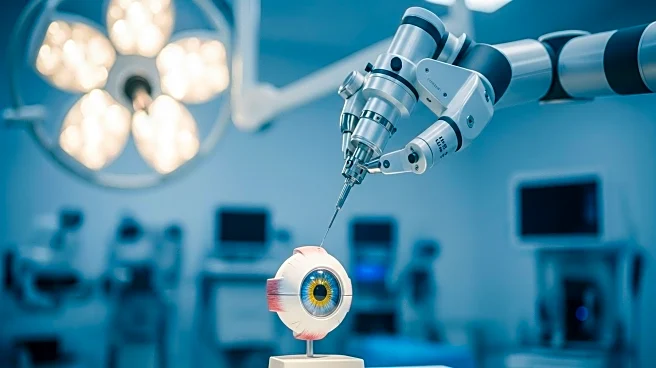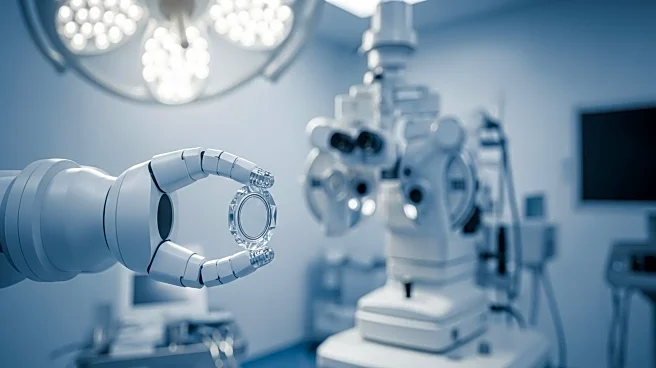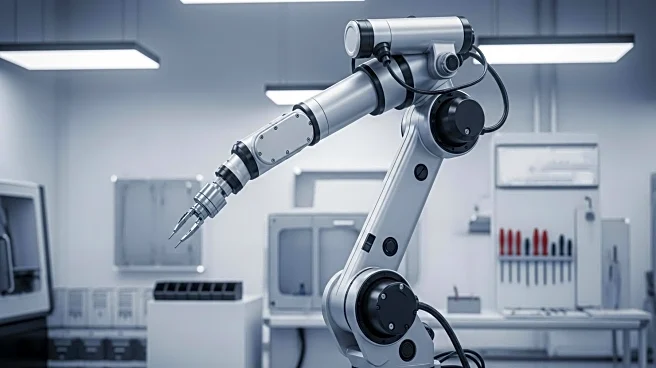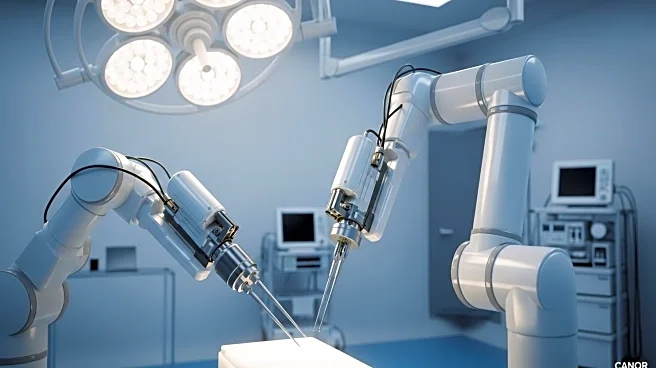What's Happening?
ForSight Robotics, founded in 2020, is developing the Oryom platform, a robotic system designed for eye surgery, particularly cataract removal. The platform uses AI and advanced computer vision to enhance surgical precision, aiming to improve global access to eye care. The company has completed over 300 cataract procedures on porcine eyes and is preparing for its first in-human clinical trials. With $125 million in Series B funding, ForSight is focused on expanding its technology to address the growing demand for ophthalmic surgeries amid a shortage of trained surgeons.
Why It's Important?
The development of robotic systems like Oryom could significantly impact the healthcare industry by increasing surgical accuracy and expanding access to eye care, especially in underserved regions. As the global population ages, the demand for cataract surgeries is expected to rise, while the number of available surgeons may decline. ForSight's technology could help bridge this gap, offering more efficient and precise surgical options. This advancement also highlights the potential for robotics to transform medical procedures, reducing surgeon fatigue and improving patient outcomes.
What's Next?
ForSight Robotics plans to conduct its first in-human clinical trials later this year, marking a critical step towards commercializing the Oryom platform. The company aims to scale its technology globally, starting with the U.S., and then expanding to regions with significant healthcare infrastructure investments, such as India, China, and the Middle East. The success of these trials could pave the way for broader adoption of robotic eye surgery, potentially setting new standards in ophthalmic care.
Beyond the Headlines
The integration of AI and robotics in eye surgery raises ethical and training considerations. Surgeons may need comprehensive training to adapt to new technologies, ensuring safety and trust in robotic systems. Additionally, the widespread adoption of such technology could shift workforce dynamics, potentially reducing the physical demands on surgeons and allowing them to focus on more complex cases.












